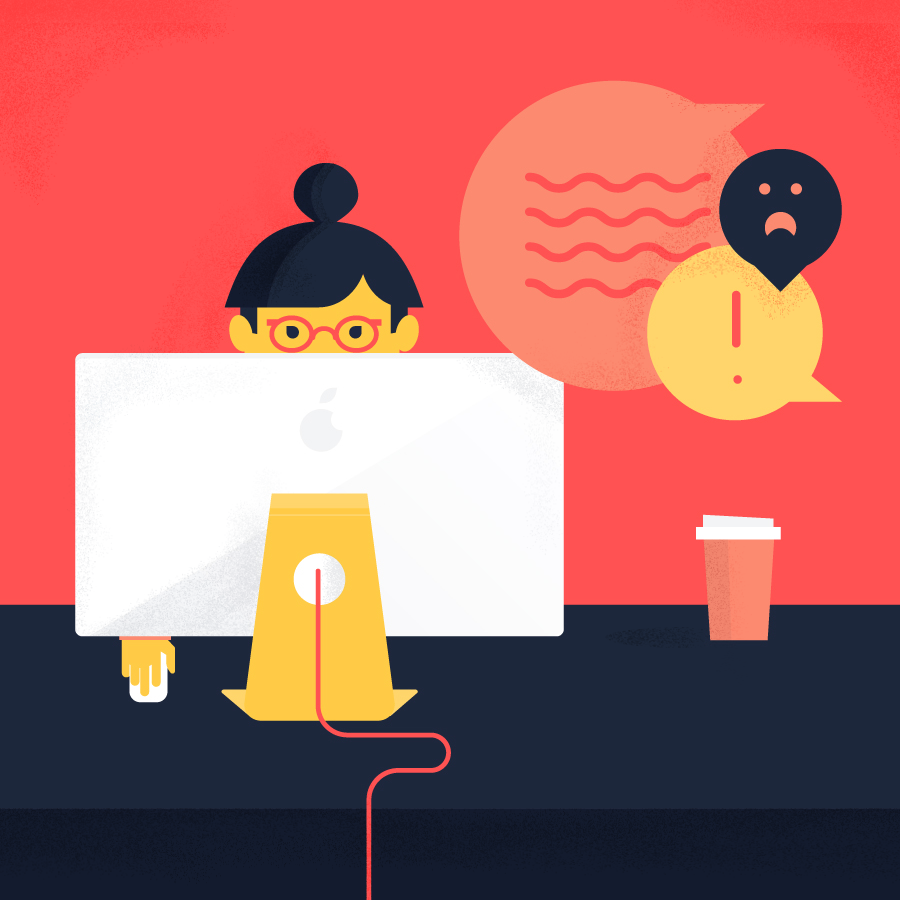How to Make Your Design Team Love You: A Guide
Do you ever get the feeling you’re “that guy” on creative projects with your design team—whether it’s in-house, or an agency? Fear not, friend, this is for you. Working with an expert in an area outside your expertise can be intimidating. Fortunately, most designers have learned, by repetition, to interpret our pedestrian, non-specific (but well-intentioned!) feedback. That’s not to say that we couldn’t meet them halfway, though.
Learning from my own “forehead-meet-palm” moments, I polled the Beutler Ink design team and compiled a list of do’s and don’ts that will help you be more specific and helpful in these interactions.
Hopefully, your designers are probably too nice to point these things out—but I’m not! Here’s what I’ve learned:
Don’t treat them like a pixel-pushing puppet
Standing over their shoulder or micro-managing every design decision is insulting, and the quickest way to lose the respect of your design team. Beutler Ink designer Jay Doronio says, “If you're working with a great designer, trust in their capabilities and let them do what they do best. It's like going to the hospital and telling a doctor how to do their job.”
He adds: “A common misconception about design is that it's just drag-and-drop, find-and-replace, when in reality every move is considered and any change has an effect on everything.”
Tell them your problem, not how to fix it
I know it sounds completely counter-intuitive because, as a project manager, I’ve always been told NOT to dump a problem on someone without a solution in mind. But this is an area where you (and I) are not experts. And it’s more likely your designer will know of a solution better than your “solution”. Insisting on doing it your way will probably make their lives a lot harder than if you’d just been open about your problem in the first place.
For example, one designer at Beutler Ink remembers a time when a project manager sent their own sketch to a client “for the sake of time” which led to the approval of a (no names here) lousy layout concept, instead of a much simpler and elegant solution that the designer could have easily provided.
Always, always provide final copy
It’s 10 times easier for you to make copy changes to your Word document than it is for your designer to make all of your copy revisions throughout a completed design (especially *gasp!* for an ebook. Never do this). For their sake and times sake, double check that the copy you’re turning over is 100% final.
Understand how long things actually take
No matter how well you prepare, there are some things you’ll want to change later. For reference, here are a few things that are very quick to fix:
· Changing colors · Changing fonts · Making copy edits (unless you’re changing the overall length of the copy, which may take more time to re-configure)
Here are some things that are not quick to fix:
· Resizing the entire graphic to different proportions · Making changes to illustrations · Moving chunks of text around · Moving elements around the page
Avoid piecemeal feedback
Sending 10 different emails and including one new change in each isn’t cool, guys. Be the liaison for your whole team: round up everyone’s feedback into one place and post it all at once. Simple! Even if they don’t say so, you are now their hero.
Don’t decide to print something in the middle of a project
Let’s say you’re creating a visual project for the web… and then you realize you’d really like to make it a leave-behind, too. It doesn’t sound like it’d be that big of a deal, right? I have bad news: it almost certainly is.
When the designer knows from the get-go that you want to print something, she'll design it with standard print specifications in mind. Having to apply new conventions based on the needs of a different medium to something that’s already been started is like realizing you’re reading the recipe for split pea halfway into your clam chowder.
Make sure your feedback actually means something
Can you explain what “make it pop” means? How about you think about what you really mean, and then ask that? Other unhelpful gems include “fancy,” “dynamic,” “cool,” and “catchy.” Blech.

